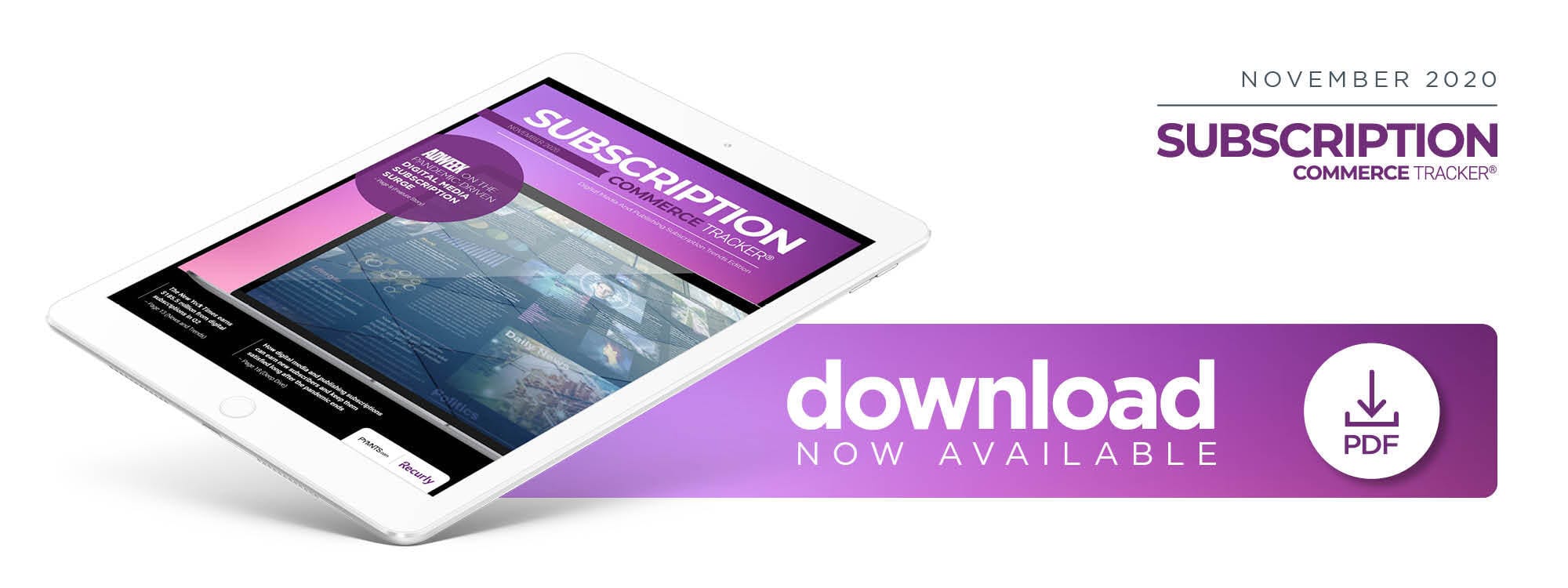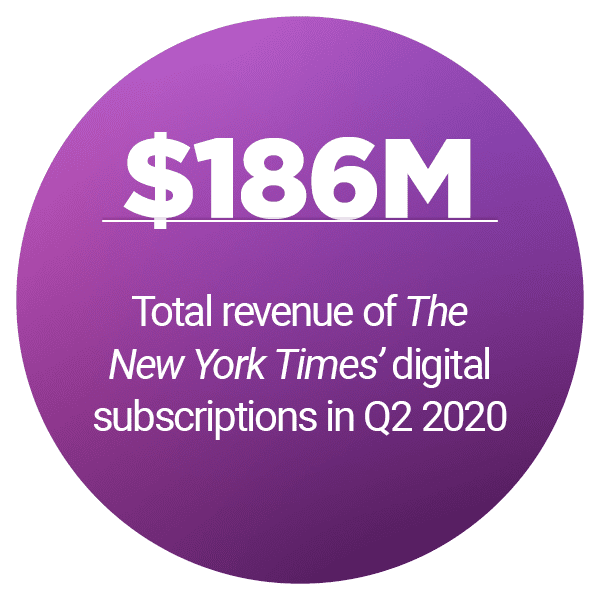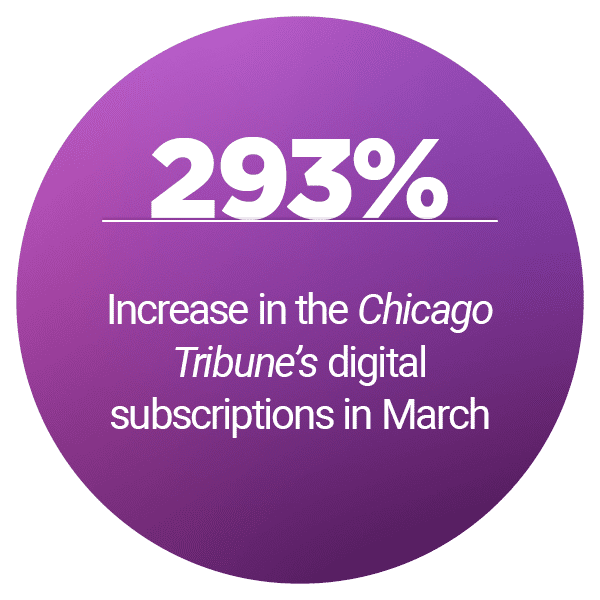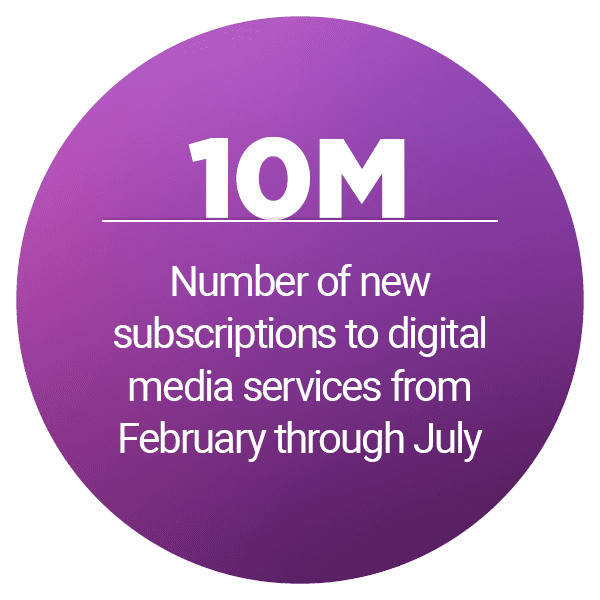
 The pandemic continues to have a monumental impact on commerce worldwide, with brick-and-mortar retail suffering due to unemployment, in-store safety restrictions and consumers’ concerns about contracting the virus during in-person interactions.
The pandemic continues to have a monumental impact on commerce worldwide, with brick-and-mortar retail suffering due to unemployment, in-store safety restrictions and consumers’ concerns about contracting the virus during in-person interactions.
The United States’ gross domestic product (GDP) has slipped 32.9 percent since March, illustrating just how dramatically the health crisis has affected the nation’s economy.
The subscription commerce sector, however, appears to be weathering the economic storm and could even emerge stronger once the pandemic recedes. It is predicted to leap from just $13.2 billion in 2018 to value $478.2 billion globally in 2025, marking a compound annual growth rate (CAGR) of 68 percent over the next five years.
Some of this growth is being driven by sign-ups to digital media subscription services like The New York Times and Chicago Tribune, with the former experiencing 14 percent growth in its most recent quarter. PYMNTS’ Consumer Subscription Retail Services Report, done in collaboration with subscription services provider Recurly, found that subscriptions to such digital media companies increased by a staggering 10 million from  February through July, totaling 25 million.
February through July, totaling 25 million.
Despite this robust growth, digital media and publishing subscription providers still have to confront subscriber churn. The report noted that 17.5 percent of digital media subscribers plan to end their services at the end of the pandemic, in fact, unless they’re given good reason not to. This month’s Subscription Commerce Tracker® focuses on how subscription providers can leverage free trials to keep consumers engaged as well as pause features to help them temporarily halt their services instead of leaving for good.
Around The Subscription Commerce Space
Newsrooms have struggled with funding shortages and staff cuts in recent years, but one report showed that many are rolling out digital subscription strategies that can help them outlast the pandemic and ultimately thrive. The New York Times reported 240 million unique visitors in March, representing a 138 percent boost over the 101 million is registered in January. These metrics indicate that media companies are catering to an increasingly digital customer base, giving them many chances to convert these consumers into regular subscribers.
Other services providers that have typically focused on brick-and-mortar commerce are reinventing their operations as foot traffic drops off during the pandemic. Designer dress and accessories rental services provider Rent the Runway, for example, announced that it was closing all of its United States storefronts and shifting its subscription model to offer various plans ranging from $89 to $199 per month. The service allows customers to choose up to four, eight or 16 items — depending on the subscription level — and they can pause their services at any time.
 The travel industry has also been hit hard by the pandemic, but some service providers in this space are also turning to subscription models — and seeing success when they do. Denver-based luxury travel agency Inspirato has unveiled two high-end travel plans, one of which offers access to exclusive resorts and destinations for $600 per month, and another that enables users to book up to 25 nights each year at various destinations without paying rates or fees. Budget travel services providers are also capitalizing on the model, with London-based BeRightBack saying its 49.99 pound ($63) monthly plan — which lets users take up to three trips per year at select locations — has helped it keep its user base intact during the pandemic.
The travel industry has also been hit hard by the pandemic, but some service providers in this space are also turning to subscription models — and seeing success when they do. Denver-based luxury travel agency Inspirato has unveiled two high-end travel plans, one of which offers access to exclusive resorts and destinations for $600 per month, and another that enables users to book up to 25 nights each year at various destinations without paying rates or fees. Budget travel services providers are also capitalizing on the model, with London-based BeRightBack saying its 49.99 pound ($63) monthly plan — which lets users take up to three trips per year at select locations — has helped it keep its user base intact during the pandemic.
For more on these stores and other headlines, read the Tracker’s News and Trends.
Digital Media Service Providers Seeing Subscriptions Spike During Pandemic
Consumers have eagerly turned to trusted news sources in their search for pandemic-related news, prompting subscription boosts for many major news publications, including The New York Times and Dow Jones.
In this month’s Feature Story, Jeff Litvack, CEO at advertising trade publication Adweek, discusses how digital media companies are rolling out high-quality content and capturing sub scription sales to keep subscribers signed on and engaged.
scription sales to keep subscribers signed on and engaged.
Deep Dive: How Digital Media And Publishing Services Providers Plan To Keep Subscribers Satisfied
The pandemic-driven push to remote work has left many consumers craving content that can easily be accessed remotely, and digital media and publishing services providers are heeding the call by offering subscription services. There is still the risk that these customers will abandon their subscriptions once the health crisis ends, however, unless providers take key steps to keep them engaged and prevent them from canceling.
This month’s Deep Dive explores how subscription models are helping digital media companies reach more consumers as well as the challenges these firms face in keeping them satisfied.
About The Tracker
The Subscription Commerce Tracker®, done in collaboration with Recurly, details how digital media and publishing subscription services are working to satisfy a flood of new subscribers during the pandemic and retain them once the health crisis ends.